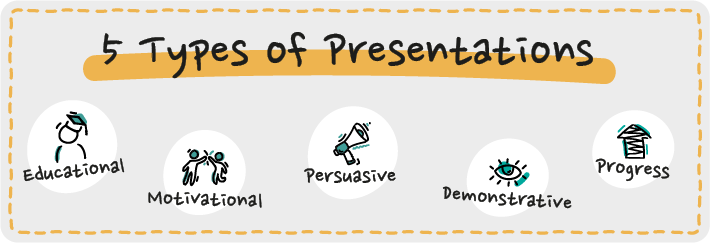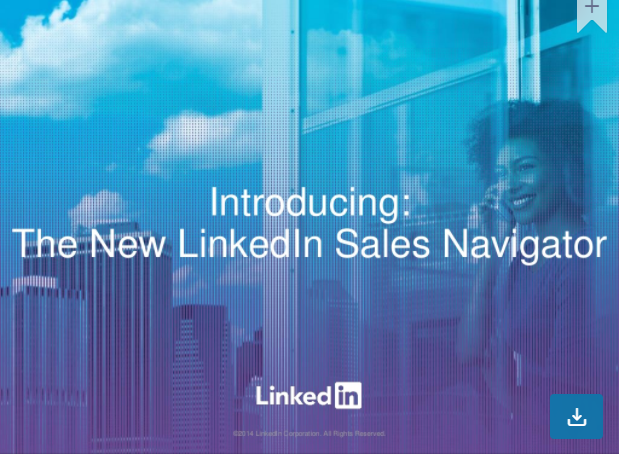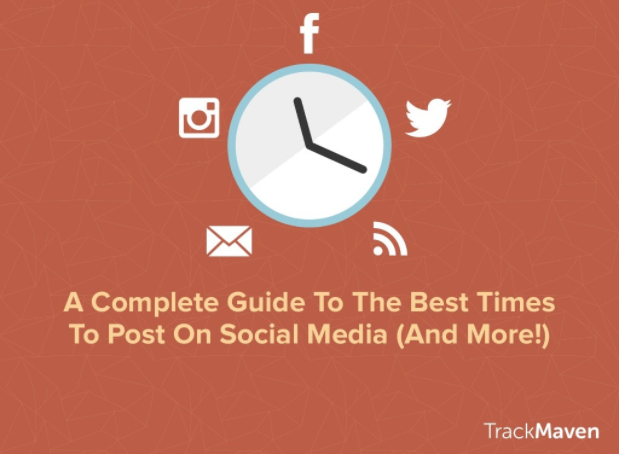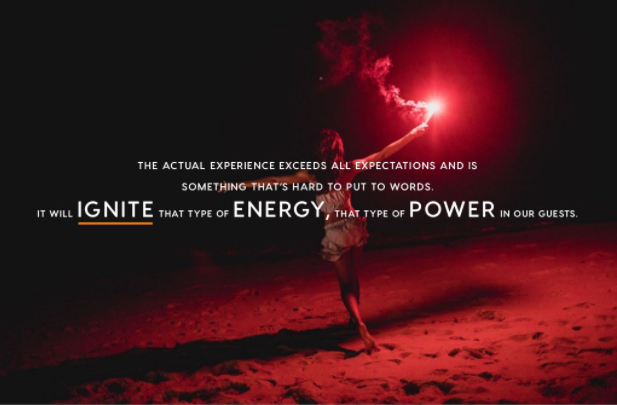The chasm between a bad presentation and a great one is vast.
Dull slides. Lifeless text. Confused graphics. It doesn’t matter how important the information you share is. If you aren’t able to nail your presentation design, you’re not going to connect with your audience in the way you want. 🧐
But great presentations inspire, inform, motivate, and persuade. They leave your audience better off than they were before.
So what do you need to make an effective visual presentation?
Let’s jump into the elements you should consider when designing presentation slides for your organization or clients. We’ll also explore tips for creating impactful visuals and examples of engrossing design.
What Is Presentation Design?
Presentation design centers around slides. A designer uses layout and visual techniques to convey information on a set of slides.
There are many types of presentations. Reports. Keynote speeches. Video slideshows. But most incorporate a visual medium — namely slides — to tell their story.
Any visual presentation will have a specific intent. It will inspire, inform, instruct, or entertain. To express your presentation’s intent, you’ll bring together words, concepts, and images in an artful way. Your end goal is to ensure the audience experiences the value of the information, understands why it matters, and, ideally, changes in some way by the end.
Think of it this way — without design, presentations appear like a list of information.
Maybe you have a couple of graphs. Some bullet points. But, ultimately, there’s no momentum to take the audience on a journey. There’s no story.
With great design, a set of slides transforms from a pile of facts into useful, compelling storytelling. 🤓
There’s a buildup of information. A lucid moment where the purpose behind your presentation emerges. And then an unleashing of energy as your details and supporting data unfold. This momentum brings your audience to a sense of closure. And then opens the window to a clear picture of what comes next with your call to action.
Why Is Great Design Critical When Presenting Information?
Design is critical because it’s the visual impact that enables your audience to better retain the information you’re presenting.
Science shows that people generally retain 10 to 20% of written or spoken information, but nearly 65% of visual information! Not only that, but design enhances understanding. Our brains process images from 6 to 600 times faster than words.
Also, whether you’re trying to entertain or inform, you need to keep everyone’s attention. Because well-designed slides are interesting, you’re going to hook your viewers and form a deeper connection.
Boring presentations, on the other hand, are easily forgotten. 🥱
What Are the Different Types of Presentations?

From training material to sales presentations, there’s a wide range of presentation types your business — or your clients — might use.
Understanding the type and what it entails can help you identify what design components, style, and techniques you want to use to create the best experience possible for your audience.
So let’s unpack the different presentation types to get a feel for how wide the world of presentation design is! 😲
Educational Presentations
When you want to inform or educate a group of people about a certain topic, you can use an educational presentation.
Examples include:
- Work training
- Research reports
- Internal meetings where you’re teaching stakeholders about an idea or concept
- Product presentations where you’re educating target buyers about a product or service
Because this type of presentation involves a lot of information, your design should hone in on one concept at a time. Each presentation slide should build upon the information you present in the previous one. This will make it easier for your audience to digest what you’re sharing.
Another helpful technique is to summarize the key information in your final slides. Use bold typeface, large text, and lots of whitespace to allow the viewer to focus on data points or essential facts without distractions.
Motivational Presentations
When you want to motivate your employees or inspire your audience, a motivational presentation is a powerful tool.
In this case, you’re conveying information, but you’re also trying to help your viewers feel something. Motivational presentations are essentially emotive.
As such, you might use more images with people — whether photographs or illustrations — to guide your audience along a specific conceptual path.
With motivational presentations, your designer will also need to be more tuned into their color choices. Every color triggers a certain set of feelings on a subconscious level. Reds are energizing. Browns are grounding. Blues are calming. Using colors expertly in the design can make your presentation far more impactful.
Persuasive Presentations
Sales presentations, slideshows for marketing purposes, and policy-making presentations all are examples of persuasive presentations.
Any time you’re trying to convince your audience of something, you can use this type of presentation. For example:
- You want prospects to buy your product or service.
- You want your target buyers to believe your product is the best solution to their problem.
- You’re trying to convince decision-makers to agree with your goals.
- You’re speaking to a general audience and sharing an idea or vision you want them to believe is worth engaging with or pursuing.
- During a keynote speech when you need slides to keep your audience on track as you share your point of view on a topic.
Persuasive design requires a balance between hard facts and emotive imagery. That’s because you need facts to give your story authority — such as statistics, expert quotes, or case study results. Then the visual images and your choice of typography and color influence your viewer’s emotional experience.
When you bring these two elements together in your presentation design, it’s easier to convince people of your argument.
Demonstrative Presentations
You might use demonstrative presentations if you’re running a workshop and training session. They’re widely used in business, education, and marketing.
This is the most visual type of presentation. You are showing your audience how to do something or how something works.
So how can you pull off detailed instructions with great design? With demonstrative slides, you’ll use visual representations of each step of a process to teach your audience a new skill or to give them a better understanding of how a process works.
- To make the slides easy to absorb, use text to accompany each step.
- Keep your content short and sweet so the audience can focus on your step-by-step designs.
- The presentation format should be simple outside of the instructional images — too many decorative elements can distract from the messaging.
Because this type of presentation design is more focused on ‘showing’ rather than telling, video is a better format than a set of slides. However, with a skilled graphic designer, you can share easy-to-follow detailed instructions with slides.
Progress Presentations
When you need to share updates on a project or initiative, a progress presentation will do the trick!
With this type of presentation, the goal is to ensure everyone in your audience is on the same page regarding a specific project. So to get everyone up to speed, your design will take a time-focused storytelling approach.
The presentation design will go from past, to present, to future.
What was the status quo before the ad campaign, marketing strategy, growth initiative, or other project was implemented? To set the stage, your graphic designer might use both images and your baseline numbers.
What is the data now? Here’s where your presentation will share graphs and other types of data visualizations.
What’s next? You can close your progress presentation by introducing discussion questions for the group. Or, lay out a clear path for the next steps to take to move the project along. Bullet lists are great here, whether you’re presenting questions or actionable steps.
No matter what type of slide presentation you’re putting together, the key is to always keep the movement of your ‘story’ in mind. The way to do this is through great design.
Don’t have the in-house graphic design manpower to create
powerful presentations? Try unlimited design services from Epiic!
Basic Components of Presentation Design
So what are the ingredients of a compelling presentation? What should be in your design?

While there are different types of slide presentations, each with the need for a certain look and feel, there are certain design techniques that you’ll want to keep in mind no matter which type you’re creating.
Powerful Visuals: Say More with Less Text
One of the golden rules of presentation design is to lean into your visuals and to keep your text light.
Here’s the thing — you’ve got a lot of ground to cover. This is a presentation, not an ad or a social media post where you’re just trying to capture someone’s attention for 10 or 15 seconds. ⌚
But, you still don’t have a lot of time to play around with each slide. The average adult attention span isn’t exactly as short as a goldfish’s, 😊 but it’s not that much longer.
So if you go past 20 minutes, you’re going to lose some of the fish in your audience. A few of the humans will probably check out, too. This is why legendary marketer Guy Kawasaki follows his 10-20-30 rule for slide presentations. It’s 10 slides, 20 minutes, and no fonts smaller than 30 points.
With big fonts, big visuals, and minimal text, your presentation will have to focus on what really matters. There’s no room for anything else.
So you can present your essential points textually in your slides. But the furthering of your concepts, the presenting of data to drive a point, the emotive or descriptive examples — let your audience visualize these things with graphs, charts, photographs, and illustrations. You’ll be able to convey more information more effectively, within a crisp, engaging, and wonderfully short presentation.
A picture speaks a thousand words — we say it all the time in the design world because it’s true.
Readability: Send a Clearer Message with Better Organization
Leading with powerful visuals is step one. The next thing you need to create compelling presentation designs is good structure and organization.
The way all of your design elements — the text, visuals, borders, and whitespace — are structured will determine how easy it is for your audience to digest the info. Ultimately, the higher the readability, the more information will sink in when someone sees your slide. Proper structure and organization can also help make your design more interesting, which is key to keeping their attention.
Let’s look at what you can do to boost organization and structure:
✅ Be consistent with colors
Use two to four colors and stick with them for all of your slides. Consistency will make it easier for your audience to jump from one slide to the next. It also enables the viewer to focus on the content rather than being distracted by different colors (no offense, rainbows.) 😉
✅ Keep your fonts simple
No flashy fonts. Choose a standard font or two, such as Arial, Merriweather, or Open Sans, for your main text. These fonts are clean, simple, and easy to read.
You can use a more creative font in small doses. Just don’t go overboard. 😁
✅ Use bold, italics, and underline for emphasis
While you don’t want to use complex fonts, you can use bold, italics, and underline features to draw attention to specific words or lines of text. Don’t overuse these. But when you want to highlight a data point or word, this is the way to do it.
✅ Make color contrast your friend
Depending on the environment of your presentation — are people looking at slides on a projector, reading a slideshow online, or somewhere else — it might be difficult to see small details. Poor contrast can make it even more difficult to see.
That’s why it’s important to use a healthy amount of contrast between light and dark, solid and patterned. Contrast will help key elements stand out.
✅ Use lots of whitespace
Empty space around your text and visuals is the relief that makes your content visible. In short, you need it.
As tempting as it is to try and fit more on each slide, it’s more important to include a fair amount of whitespace around your content. As German book designer Jan Tschichold famously said in 1930, “white space is to be regarded as an active element, not a passive background.”
Use whitespace to guide the reader from one element to the next and to break up pieces of content.
✅ Eliminate the unessential
While you do want your slides to be aesthetically pleasing, don’t overdo it. ⚠️ Choose one main point for each slide. Then, include elements (color choice, visual elements, text) in your slide’s layout that support or further explain the idea of that main point. Nothing else. Nothing for the sake of being decorative.
✅ Balance text with visual representations and vice versa
To keep your slides interesting, strike a balance between text and visuals, as well as between hard data and lighter information. This holds for each slide, and for the slide as a series.
For example, don’t show data visualization after data visualization. Don’t follow a list of bullets with more bullets of text. 🧐
Do vary your visual-forward slides with more text-focused slides. Give your audience a graph, followed by a few bullet points paired with a descriptive visual, followed by an inspiring quote. This variation will help to create a cadence that generates movement in your story.
Visual Hierarchy: Make Your Presentation Design More Effective
When people read your slide, they’re naturally going to read from left to right, top to bottom.
However, if you have images and text in different positions, figuring out what to read first can get tricky. This is where visual hierarchy comes in. Bold, larger font, borders, color contrast, positioning — use the best design techniques in your layout to ensure your visual hierarchy is crystal clear. 💎
It should be obvious what you intend your audience to see first and what the flow of observation should be. Using visual hierarchy will make your presentation design more effective. Here’s how you can make this happen:
- Highlight the most important points you want your audience to take away with bolding, italics, or color.
- Use proximity to indicate what elements are grouped together. The human eye sees things that are near each other as being in the same group.
- Similarity is another technique you can use to group elements. The same color, typography, orientation, or style indicates that certain things are meant to be grouped together to convey an idea.
- Symmetry indicates equality between concepts. When more than one or more ideas or design elements have the same level of importance, they should appear to balance one another in the design. They are visually carrying “equal weight.”
- To draw the viewer’s eye along a certain path, use continuity. The mind will automatically follow a smooth flow in the design.
- Scale is another principle that can help to establish each element’s rightful place. The larger the scale, the more important something appears. If you want people to read specific text (or look at a specific image) first, make it big!
- Difference or contrast will make your text or image stand out. Use this principle when you want the viewer to pay more attention to something, like a key stat or a descriptive word you want to emphasize.
Data Visualization: Make Your Presentation More Impactful
When you’re presenting, you’re going to use data to tell your story. But the way you help your viewers visualize this data is critical.
A standard bar graph or pie chart isn’t going to be as effective as an expertly designed data visualization.
Why is this? 😉
First off, data is easier to understand when it’s presented visually. When you can use a chart or graph instead of a table or text block to show the data, do it.
Second, a good data visualization goes deeper than a simple comparison of variables or a visual representation of change. It can engage. With skilled data design, you can show off the wow factor that your data offers.
So what are the ingredients of a powerful data visualization?
- Creative use of techniques – From timelines, pictograms, and Venn diagrams to line graphs, maps, and flow charts, there are a lot of options — use the one that works best for the data you want to present.
- Thoughtful use of color – The colors in your charts or graphs should complement the rest of your design, yet you also need some color contrast to help your visualization stand out.
- Descriptive headline – Leverage the title for your data visualization to describe what you’re revealing through the data. Don’t think you can’t be creative, or even a little fun. Your headline is an opportunity to pique your audience’s interest.
- Helpful callouts – Guide your audience with a callout. You can use something simple such as a box with text or different typography to explain a key point in your data. This is a useful technique when there is a sudden shift in events or a variable that stands out.
- Balanced design – Designing data visualizations requires skill and experience. Otherwise, you’re going to end up with a data visual that’s either too flat or too overwhelming. To achieve an impactful visual, you want to balance simplicity and detail.
You can create a balanced design with subtle design techniques. Using a contrasting color at the right time, the perfect background, the appropriate font weight, the right quality for each element — it’s all the fine-tuned nuances, elegantly organized, that make the fireworks.
Short on in-house design talent?
Let our skilled graphic designers create what you need.
7 Examples of Inspiring Presentation Designs
Learning about the various components of presentation design, you can see there are a lot of factors you need to get right. While all the little details are critical, it’s also important to grasp the big picture — the overall effect that occurs when design elements are interwoven in a purposeful, compelling way.
Just like a story. 😎
Let’s bring everything together so you can see what great design is capable of. Here are 7 examples of on-point presentations.
Brilliant Noise

There is a quiet brilliance in this presentation example. There is no kaleidoscope of colors. No complex visuals. Instead, Brilliant Noise uses blacks, grays, whites, and a dash of mustard yellow at the right moments. It’s a clean layout and uncluttered data visualizations telling the story of wearable technology.
Uber for Business

Uber grabs attention by starting its Uber for Business slideshow with a series of relatable images in the background. This invites the audience to take notice so they are more likely to see all the subsequent marketing messaging — the benefits, how the process works, testimonials, and the call to action.
The blue and gray color palette also helps to hold the viewer’s interest. These colors cast a traditional, professional feel, which inspires trust and confidence.
LinkedIn Sales Navigator

This LinkedIn example shows us how to make a presentation a hit with a handful of stats and a unique background. The textured gradient is calming and reassuring, setting a welcoming tone. Also, the cloud imagery feels optimistic.
To balance this interesting background design, LinkedIn uses a basic template for the layout. There’s narrative text at the top of each slide and the main content centered beneath it. That’s it. This presentation format makes it easy to follow the Sales Navigator story.
Track Maven When to Post

Track Maven’s superpower is cadence. This presentation slideshow divides the content up into chapters using a solid color, followed by clear, easy-to-read data visualizations. The same color used in the introductory slide is used for the heading font for each section and for callout text.
There’s a lot of information in this presentation, but by pacing and using color to organize the flow of ideas, it flows well. Track Maven also does a nice job summing everything by devoting a couple of slides to a conclusion section.
Zuora Sales Deck

The Zuora Sales Deck uses contrast to tell its story. Images with a warm or cool hue make up the background for most of the slides, and white text drives home the message.
This design lets Zuora convey the atmosphere and mood they want the audience to feel: There’s a sense of a brighter future, happy customers, and looking ahead. Then, when it’s time to dig into the details — the why behind the subscription business model — the design switches to a simple dark background with light text. It’s really well done.
Fyre Festival

For the Fyre Pitch Deck, the presentation starts with a modern look. Blocks of text introduce the problem — the evolving music industry — and go on to divulge the company’s high-flying solution. The luxury festival of the century.
The pitch deck is filled with photographs of paradise and convincing arguments. And it’s loaded with influencers to build trust in the brand.
Of course, we all know that Fyre was nothing more than a flop. But the promotional efforts and ability to cast a sublime reality through visual messaging are worth studying.
OfficeVibe Secrets to a Good Team

Nothing says productive millennial collab sessions like smiling hipsters crowding around a table filled with laptops. OfficeVibe ticks all the boxes, appealing to the right audience with the right colors and the right bright, airy vibe.
This presentation design keeps the text short so the focus is on the visuals. Also great — the headline text for each slide is large and bold. This helps present the visual hierarchy. In addition, it gives viewers the opportunity to just skim the slides and still walk away with the gist of the OfficeVibe messaging.
Ready to better connect with your audience with great design?
Choose a plan that works for you.
How to Make Presentation Design Work for Your Business
A visual presentation is a powerful tool for brand-building and strengthening customer relationships. Whether you want to inform, inspire, educate, or persuade, great design is key.
So, how can you make a presentation that gets results? It’s not about using a certain template or presentation layout. Nor are there a set of best colors, fonts, or graphs you should use. Presentation design is both art and science. Creativity and technique. And to make it a success, you need a designer that understands how to weave all the elements together in a way that reflects your brand, your message, and your audience.
Apr 05, 2022




Andy Zenkevich
Andy is a seasoned CEO with years of hands-on experience in SEO, link building, content marketing and website development. His deep understanding of the digital landscape and passion for content marketing make him a trusted voice in the industry.